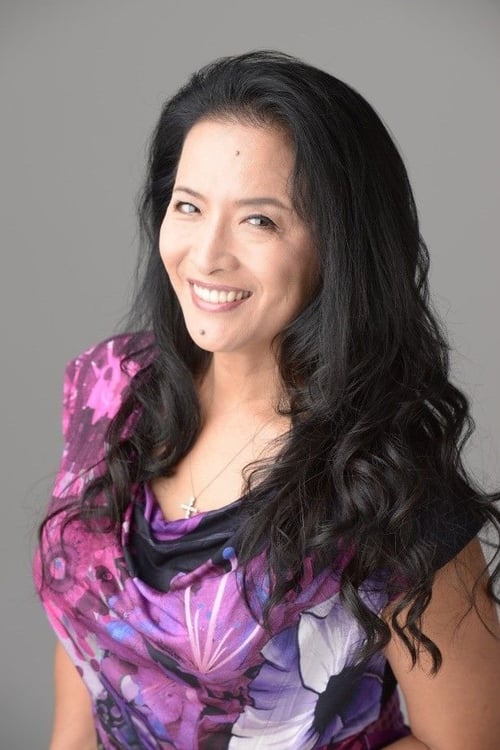
Kimiko Ikegami
출생 : 1959-01-16, New York City, New York, USA
약력
From Wikipedia, the free encyclopedia.
Kimiko Ikegami (born January 16, 1959) is a Japanese actress. Born in Manhattan, New York City, she moved to Kyoto at age 3. Kimiko graduated from Horikoshi High School in Nakano, Tokyo and subsequently attended Tamagawa University. She is closely related to the Bandō Mitsugorō kabuki actors: her grandfather was the eighth, her uncle the ninth (later Bandō Minosuke VII), her cousin (Bandō Yasosuke V) the tenth to take that name. With the encouragement of that cousin, Kimiko turned to acting.
She made her television debut in 1975 in the NHK show Maboroshi no Pen Friend, and in that year also appeared in Ai to Makoto on TV Tokyo. Her entry into film came in 1975, when she appeared in Hadashi no Seishun (Shochiku). In Taiga drama series, Kimiko portrayed Ōhime Kusa Moeru (1979) Chacha (later named Yodo-Dono) in the 1981 Onna Taikō-ki, Lady Tsukiyama (the wife of the title character) in Tokugawa Ieyasu (1983), and Eri (Lady Aburakawa, concubine of the title character) in Takeda Shingen. Other jidaigeki roles have included Sumi in the 1988 NHK Miyamoto Musashi Okon in Tōyama no Kin-san (1989), and Nami in the 2003 TV Tokyo Chūshingura: Ketsudan no Toki. Contemporary roles include the yakuza in Gokudō no Onna-tachi Revenge (the thirteenth in the series) and the female lead in Shiroi Kyotō (TV Asahi, 1990). She appears frequently as a guest star on television series such as Mito Kōmon.
Kimiko also recorded a song, Nagasarete, on the Victor Entertainment label. The 1984 release (as of 2006, out of print) was the theme song for the show Kiryūin Hanako no Shōgai.
Her honors include the 1990 Japan Jewellery Association Best Dresser Award.
Description above from the Wikipedia article Kimiko Ikegami, licensed under CC-BY-SA, full list of contributors on Wikipedia
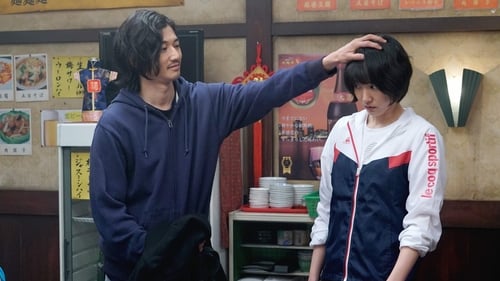
어머니의 스파르타 교육을 통해 한때 천재 탁구 소녀로 미래가 총망 되던 미치코 (아라가키 유이)는 어머니의 죽음후 보통으로 청춘을 보내고 일반적으로 취업하는 평범한 나날을 보내고 있지만 회사의 탁구부 꽃미남 에이스 에지마 (사토 코지)에게 고백 사귀게 되면서 장미빛 인생이 시간 되나 하는 순간 신입 여사원 미인 탁구선수 나가노 메이에게 뺐겨 버린다 한순간에 인생의 수렁에 빠지고 도망치듯 시골로 돌아온 미치코 돌아가신 어머니가 경영하던 탁구 클럽은 적자에 빠져 있었고 자신이 활기찬 어린시절을 보냈던 풍경이 아니였다 거기에 아내와 딸에게 버림받은 신인 부원인 하기와라 (에이타)를 비롯해 전혀 기대를 할수 없는 상황 그러나 미치코는 하기와라와 쌍을 이루워서 전 일본 탁구 선수권 남녀 혼합(믹스) 복식 부분에 출전을 결심 부원들은 당황하면서도 대회를 향한 맹 연습을 시작한다 항상 서로를 으르렁 거는 미치코와 하기와라는 과연 기적의 전일본 선수권 출적을 이루고 벼랑끝의 미치코는 다시 기사회생할수 있을까?

Machiko Sasamori
When the clock's hand turns into a knife, parent-child bonds are torn!

Kazuko Shimazaki
Kota Mizutani, a 10-year-old boy whose health worsened after he saw a murder, is brought to Akiko's clinic by his mother Mariko. Kota says that two months ago, he witnessed a man in a park strangling a woman with a cord and was chased by the man afterwards. Hamada, who listens to his story along with Akiko, immediately performs an investigation but cannot find any traces of the crime. However, Kota's testimony gains credence when the body of a woman killed two months before is discovered on a construction site in Kawagoe. Acting on a tip from a citizen who says she had been wearing the same clothes as the victim, the police search the house of Kazuko Shimazaki, a photographer who is often absent. But when Kazuko returns from her trip with her assistant Hirano, it becomes clear the victim is a different person.


Tamura Masakazu returns as Nemuri Kyoshiro for the fourth and final time. Gensai, an eccentric Ukiyoe artist, urgently requests Kyoshiro to kill his wife. He believes that the moment she is killed will represent the ultimate state of beauty, and wishes to see Kyoshiro's signature “Engetsu Sappo” (“Full Moon Cut”) killing technique for the purpose. But this unusual request comes not only from Gensai, but also his wife, Orin, who has a tie to Kyoshiro's past. Meanwhile, Tenzen wants to hire Kyoshiro as their master sword instructor for the Kurume Clan, whose lord has an unhealthy obsession with Kyoshiro and his Engetsu Sappo…

Sakai Nobunari an Elder in 'Honmaru' (or the main enclosure) and Mizuno Tadakuni an Elder in 'Nishinomaru' (or the south-east enclosure) have been at odds behind the scenes over the marriage of Tokugawa Ieyoshi, heir to the Shogunate. Kyoshiro, who has come back in Edo after 3 years is involved in it against his will. It's because he gets to know Lady Mihoyo who is a spy for Sakai and looks exactly like his late mother. As she couldn't complete her mission she has nowhere to go. Kyoshiro shelters her from both parties that seek her life. The original story is from "Nemuri Kyoshiro Burai Hikae" written by Shibata Renzaburo. Not only is one of Japan's greatest legends kept alive, but some secrets of Kyoshiro's past are finally revealed for the first time.

One day poison is discovered in the shogun's food. The brilliant swordsman Mondo sets out to save Japan's leader from certain death.
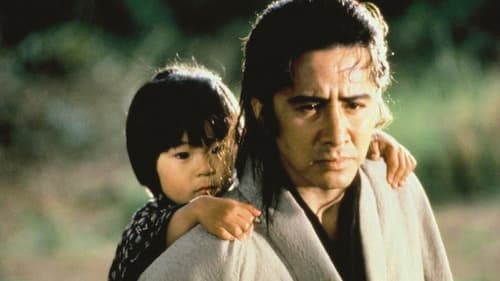
Yagyu Chizuro
A noble samurai serving the Shogun as 'Kogi Kaishaku-nin' (Official Executioner) is the target of a plot by the evil Yagyu Clan to take away his position and replace him with a member of their own family. When his wife is murdered and evidence is produced that he was plotting against the Shogun the Code of Bushido calls for him and his son to commit sepuku. Instead he defies the Shogun's orders and takes up arms against his enemies, becoming an assassin for hire.

In a maelstrom of evil, can a new magistrate, samurai Mochizuki Koheita, with a reputation like an alley cat, bring order to the town of Horisoto, or is he, too a corrupt villain looking to gain wealth from the oppressed people? From the pen of famed samurai author Yamamoto Shugoro, this exciting tale turns the tables on the standard samurai story with a unique lead character previously portrayed in Ichikawa Kon’s “Dora Heita.”

Okiku
The classic tale of the shogun's illegitimate son Aoi Shingo is told in three parts as he strives to become the greatest fencer in Japan, while his father Shogun Tokugawa Yoshimune seeks to reunite with his lost son. When the secrets of Shingo's birth are revealed to him, it sets off a series of events that bring him to cross swords with members of the shogun's inner circle in a series of duels that could change the destiny of Japan.
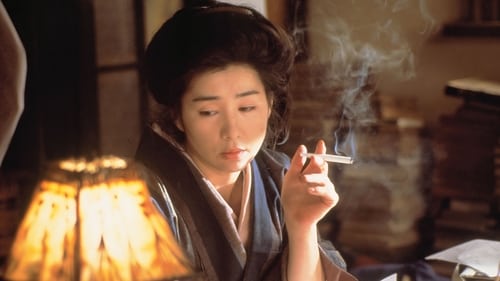
Akiko Hatano
Set in the Taisho era, which might be regarded as Japan's Hippie Phase, Hana no ran is a story about fashionable people without impulse control. Much of the action centers on a popular woman writer, the real-life poet Akiko Yosano, and her experiences among the literati of early 20th century Japan. Because of her independent, anti-war and often erotic poetry, she was a lightning rod for revolutionaries and other extremists, many of whom were destined to glamorous, yet ultimately pointless, deaths. The closest parallels might be the Byron/Shelley group or the people drawn to the Beat Generation.

Satoko Tsutano
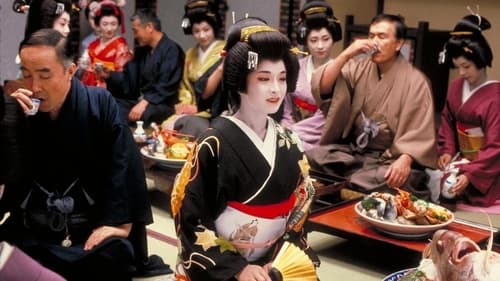
Momowaka
Yokiro was the most successful Geisha house in Western Japan during the first half of the 20th century and remains open to this day. At its peak, it was home to over 200 geisha, however behind the fabulous facade, there were many battles - between family members, men and women, and with the Yakuza. Momokawa was sold to Yokiro at age 12, and despite being the top geisha, her many complicated relationships provide unending challenges throughout her glamorous but turbulent life.

Rennyo was the key figure responsible for the restoration of Shin Buddhism in Japan, in particular the Honganji lineage that had a slump in its fortunes during the Middle Ages. According to the legend, his motivation was a pivotal childhood incident at the age of six when his mother summoned him and told him about his destiny to revive the fortunes of the Honganji school to which he was the next in line. She then mysteriously disappeared from the temple. Taking her words to heart, from a background of great poverty and hardship, at the age of 16 he set out to spread the word across the land.

Reiko Sawai (Zero)
중학교 교사인 기도는 혼자 힘으로 원자폭탄을 만들어낸다. 아무도 자신이 원폭을 가지고 있다는 것을 믿지 않을 것이라 생각한 그는 경찰에 전화를 걸어 자신이 원폭을 가지고 있음을 입증해보인다. 자신감을 얻은 그는 국가를 상대로 전쟁을 할 것을 결의한다.현대 젊은이들의 유희적 정신을 오락영화의 형식을 빌어 빼어나게 묘사한 작품으로 70년대 ‘일본영화의 구세주’로 떠올랐던 하세가와 가즈히코의 두 번째 작품이다.

Yoko Matsuoka
Kanno is a Yakuza. He had to kill Matsuoka who betrayed their boss. Kanno knew Matsuoka had a 3-year-old daughter named Youko. Before he gave himself to the police, he asked his trusted man to take care of her. While in prison, Kanno kept sending letters to Youko, disguising as an uncle in Brazil. 15 years later, Kanno is released. He is determined to live legitimately, however the Yakuza has not forgotten his wicked deed!

Gorgeous / Gorgeous' Mother
오샤레는 오늘도 친구들과 함께 여름방학 계획을 짜느라 여념이 없다. 방과 후 집으로 돌아온 그녀를 맞이하는 아빠, 이탈리아에서 돌아온 아빠가 반갑지만 아빠 옆에는 곧 새 엄마가 될 낯선 여자가 서 있다. 충격에 휩싸인 오샤레는 문득 생각난 시골 이모댁에 편지 한 통을 보낸다. 여름방학이 오고 오샤레는 7명의 친구들과 함께 시골 이모 집을 방문하기로 한다. 정겨운 시골의 분위기와 따뜻하게 맞아주는 이모는 도시밖에 몰랐던 오샤레와 친구들에게 특별한 방학을 선사해 줄 듯 하다. 하지만 뜻 밖의 사건들이 그들을 기다리고 있다. 집 안의 물건들이 그들을 위협하기 시작하고 친구들이 하나 둘씩 사라져 간다. 위협의 정체는 바로 이모. 사랑하는 사람을 전쟁으로 잃은 채 혼자 살다가 수년 전에 죽은 이모는 자신의 원한을 풀고자 젊은 처녀들을 잡아먹기 시작한다.

San
Older brother younger sister.

Youth movie.

